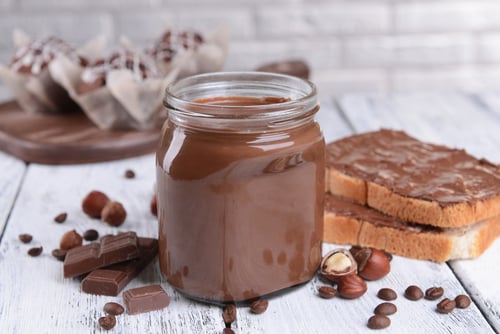The new Pan di Stelle chocolate and hazelnut spread is named after Barilla's highly popular chocolate biscuits, which are scattered with tiny white stars.
The new product will be launched in January, crucially without palm oil as an ingredient, the company said in a press release.
Nutella is regularly attacked for its use of potentially environmentally destructive palm oil, although environment groups including the WWF and Greenpeace have said Ferrero's supply chain is sustainable.
Nevertheless, right now Nutella has almost total control of the Italian market and dominates 54 percent of the world market.
Its closest international rival is Cokokrem made by Turkey's Yildiz Holding with a puny two percent market share.
Analysts note that Barilla is touting its spread's use of locally sourced nuts, lower sugar content and cacao whose purchase supports development projects in Ivory Coast.
The company says its spread will contain 100% Italian hazelnuts, and cocoa purchased in line with the responsibility initiatives implemented by the Cocoa Horizons Foundation.
READ ALSO: Nutella makers admit changing formula of famous spread
Reuters reported last month that Barilla wants to hit back at domestic rival Ferrero, which makes Nutella and Ferrero Rocher pralines, irked by the confectioner's expanding biscuit range, including Nutella biscuits launched in early 2018.
“Nutella's market share (in Italy) has been decreasing over the last five years, as consumers gain interest in niche brands with more favourable ingredients and a relatable brand image that resonates with consumer values,” said Euromonitor food consultant Emil Fazira.
“Ethical living and healthy living are two megatrends that are increasingly shaping consumer choices,” Fazira told AFP.
But Nutella-loving consumers will want to know: does the Pan di Stelle spread taste as good?
We’ll have to wait until January to find out, though the company says the addition of its biscuit crumbs means the chocolate spread will have a ‘special texture’.
READ ALSO: Italy is looking for 60 Nutella tasters




 Please whitelist us to continue reading.
Please whitelist us to continue reading.